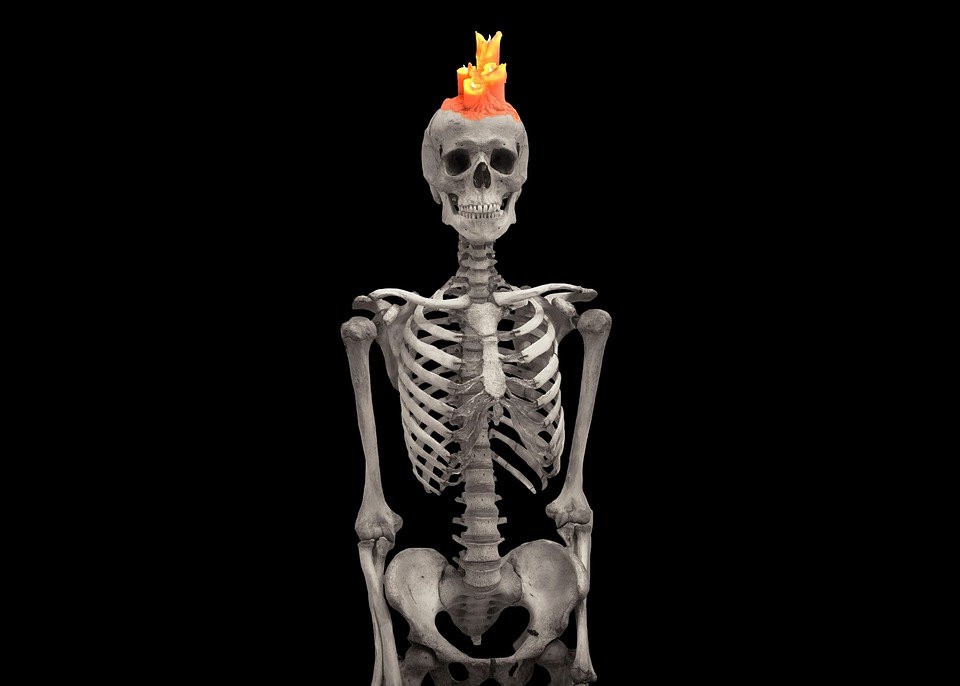The Science of Energy Release in Human Physiology
Introduction
Catabolism is a fundamental biological process that plays a crucial role in human physiology. It refers to the breakdown of complex molecules into simpler ones, resulting in the release of energy that is essential for various bodily functions. In this article, we will delve deep into the science of catabolism, exploring its mechanisms, significance in daily metabolism, interaction with anabolism (the building-up phase), and its implications for health and disease.
What is Catabolism?
Catabolism is one of the two phases of metabolism, the other being anabolism. While anabolism involves the synthesis of complex molecules from simpler units, catabolism focuses on the breakdown of these complex molecules to release energy. This process is vital for maintaining cellular functions, powering muscle contractions, and ensuring overall metabolic balance.
Catabolism can be categorized into two main types: substrate-level phosphorylation and oxidative phosphorylation. These processes are essential in cellular respiration, wherein ATP (adenosine triphosphate) is produced— the energy currency of the cell.
The Key Steps in Catabolic Pathways
- Hydrolysis: The first step in catabolic pathways often involves the hydrolysis of macromolecules such as carbohydrates, proteins, and lipids into their monomeric units: sugars, amino acids, and fatty acids, respectively.
- Glycolysis: This is a crucial pathway through which glucose is broken down to produce pyruvate, leading to a net gain of ATP. It occurs in the cytoplasm of cells and does not require oxygen.
- Krebs Cycle (Citric Acid Cycle): If oxygen is present, pyruvate enters the mitochondria where it undergoes oxidative decarboxylation to produce acetyl-CoA. Acetyl-CoA then enters the Krebs cycle, leading to the production of NADH and FADH₂, important molecules for ATP production.
- Oxidative Phosphorylation: NADH and FADH₂ generated in the previous steps are oxidized in the electron transport chain, resulting in the production of a significant amount of ATP. This process requires oxygen and is where the majority of ATP is generated in aerobic respiration.
The Role of Enzymes in Catabolism
Enzymes are biochemical catalysts that facilitate the various reactions involved in catabolic pathways. Specific enzymes catalyze each step in the catabolic process, breaking down complex molecules efficiently.
- Carbohydrate Catabolism: Enzymes like amylase (found in saliva) initiate carbohydrate breakdown by hydrolyzing starches into simpler sugars, which are further processed by other enzymes.
- Lipid Catabolism: Lipases act on triglycerides to release free fatty acids and glycerol, which can then enter β-oxidation for energy production.
- Protein Catabolism: Proteins are broken down into amino acids through the action of proteases, with each amino acid being further processed to enter the Krebs cycle.
Energy Release and Its Importance
One of the primary reasons catabolism is essential is energy release. The energy produced during catabolism is used for:
- Muscle Contraction: Skeletal muscles require ATP to contract effectively, making catabolism especially important during physical activity.
- Biosynthetic Reactions: The energy released can also be redirected to power anabolic reactions. For instance, the synthesis of glucose (gluconeogenesis) can be driven by ATP generated through catabolism.
- Thermoregulation: The metabolic processes occurring during catabolism also generate heat, which is crucial for maintaining body temperature, especially within endothermic organisms like humans.
Hormonal Regulation of Catabolism
Catabolism is highly regulated by hormones, ensuring that energy levels within the body are maintained. Key hormones involved include:
- Insulin: This hormone promotes an anabolic state by facilitating glucose uptake and storage. However, it also plays a role in inhibiting catabolic processes when energy levels are sufficient.
- Glucagon: In response to low blood sugar levels, glucagon is released to promote glycogenolysis and gluconeogenesis, enhancing catabolic activity to release glucose into the bloodstream.
- Cortisol: Released during periods of stress, cortisol enhances protein catabolism to release amino acids, which can be converted into glucose when necessary.
- Epinephrine (Adrenaline): During a ‘fight or flight’ response, epinephrine stimulates the breakdown of glycogen and triglycerides, rapidly increasing energy availability.
Interplay Between Catabolism and Anabolism
Catabolism and anabolism are interdependent processes, often referred to as metabolic coupling. The energy released during catabolic reactions is crucial for driving anabolic reactions, which build up cellular constituents.
- For instance, during periods of exercise (catabolic phase), the body breaks down glycogen to release glucose for energy. Post-exercise (anabolic phase), the body shifts towards storing energy again, replenishing glycogen and repairing muscle tissues.
- Nutrient Availability: The balance between catabolism and anabolism is also dictated by nutrient availability. An excess of nutrients may lead to increased anabolic activity, while nutrient scarcity promotes catabolism.
Catabolism and Exercise
Physical exercise has a profound influence on catabolic processes. During exercise, muscle cells increase their rate of catabolism to meet the immediate energy demands of physical activity.
- Energy Sources: Initially, muscle glycogen stores are utilized, followed by an increase in lipolysis to provide fatty acids for energy during prolonged aerobic exercise.
- Adaptations: Regular exercise enhances the efficiency of catabolic pathways. For instance, endurance training increases mitochondrial density, improving oxidative phosphorylation capabilities.
- Recovery: After intense exercise, the body enters a recovery mode wherein anabolic processes predominate. The breakdown products from catabolism—like amino acids from protein catabolism—are used to repair muscle tissues.
Clinical Implications of Catabolic Dysfunction
Dysregulation of catabolic pathways can lead to various metabolic disorders, highlighting the importance of maintaining a balanced metabolism.
- Diabetes Mellitus: Inadequate insulin regulation can lead to excessive catabolism of fats and proteins, resulting in ketosis and muscle wasting.
- Cachexia: This syndrome is characterized by extreme muscle wasting and is commonly seen in chronic illnesses such as cancer. It results from abnormal regulation of catabolism and reduced anabolic processes.
- Anorexia and Malnutrition: In states of starvation or malnutrition, catabolism ramps up to provide necessary energy, often leading to muscle loss and organ dysfunction.
- Metabolic Syndrome: Dysregulated catabolism is linked to metabolic syndrome, characterized by obesity, insulin resistance, and heightened risk for cardiovascular diseases.
Conclusion
Understanding catabolism and its pivotal role in energy release helps illuminate many aspects of human physiology. From athletic performance to metabolic health, catabolism continues to be a vital area of study. Ongoing research into the molecular mechanisms of catabolism holds promise for developing interventions that can enhance health outcomes, manage diseases, and improve physical performance.
References
For further reading, consider the following sources:
- Berg, J. M., Tymoczko, J. L., & Stryer, L. (2015). Biochemistry. W.H. Freeman and Company.
- Alberts, B., Johnson, A., Lewis, J., Raff, M., Roberts, K., & Walter, P. (2015). Molecular Biology of the Cell. Garland Science.
- Fauci, A. S., Braunwald, E., Kasper, D. L., et al. (2020). Harrison’s Principles of Internal Medicine. McGraw-Hill Medical.
- Nelson, D. L., & Cox, M. M. (2017). Lehninger Principles of Biochemistry. W.H. Freeman.
- Li, Y., & Komar, A. A. (2021). Mechanistic Insights into the Regulation of Catabolism. Nature Reviews Molecular Cell Biology, 22(2), 95-114.
- Karp, G. (2013). Cell and Molecular Biology: Concepts and Experiments. Wiley.
- Hall, J. E., & Guyton, A. C. (2016). Textbook of Medical Physiology. Elsevier.
- Ghosh, P., & Narayan, K. (2021). The Interplay Between Catabolism and Anabolism: Implications for Health and Disease. Annual Review of Physiology, 83, 257-278.
- Goodman, M. N., & Garvey, W. T. (2020). An Overview of the Effects of Catabolism on Muscle Function in Aging and Disease. Journal of Gerontology, 75(8), 1560-1564.
- McArdle, A., & Loughna, P. T. (2021). Exercise metabolism: the role of catabolism in sustaining energy demand. Journal of Physiology, 599(19), 4479-4494.
By understanding catabolic processes, we can better appreciate the complexities of metabolism and the regulatory mechanisms that sustain life. This knowledge will not only enhance our comprehension of human physiology but may also inform therapeutic strategies for combating metabolic diseases.


























Add Comment